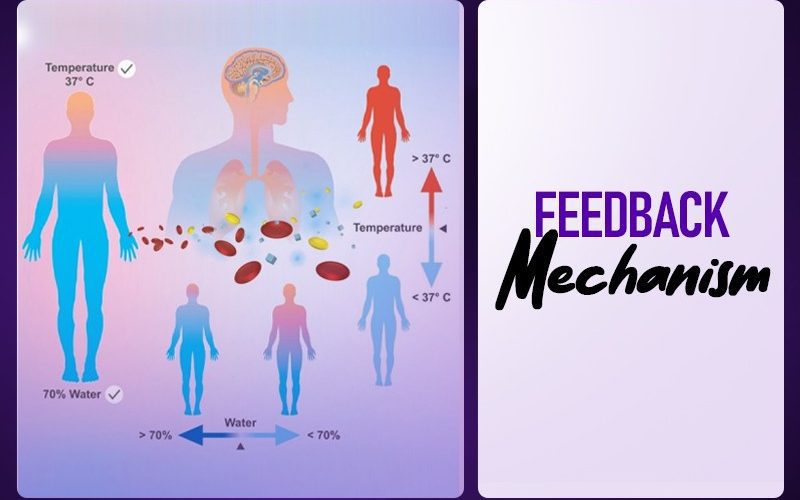Feedback Mechanism. After receiving a signal or a stimulus, a change is made to correct the deviation by depressing it with negative feedback or enhancing it with positive feedback.
Positive Feedback
In positive feedback, an end product speeds up its production.
These changes aren’t homeostatic and rare in healthy individuals.
For example- childbirth.
The early contraction of labor begins to force the baby’s head against the cervix to dilate.
Stretch-receptive neurons in the cervix send a signal to the hypothalamus and the hypothalamus responds by releasing oxytocin.
And it stimulates stronger uterine contractions which in turn results in secretions of more hormones.
The feedback cycle is finally terminated when the baby is pushed out of the body with the placenta.
Negative Feedback
The end product tends to reverse the direction of change and maintains homeostasis.
For example- If the glucose level increases, Islets of Langerhans responds by releasing insulin.
Which stimulates the breakdown of glucose and brings the glucose level to normal.
If the levels of glucose decrease, Islets of Langerhans respond by releasing glucagon that synthesizes and convert glycogen to glucose.
That results in raise in blood glucose levels.
In this way, the negative feedback mechanism controls blood glucose.
End Of Chemical Coordination
Feedback Mechanism. This was the end of the chapter on chemical coordination.
In this section, we explained hormones, endocrine glands, and exocrine glands, and we went through the man’s endocrine system and what hormones do they release.
We also discussed the diseases that would result from over-secretion or under-secretion of a hormone.
Check out our other blog posts if you wish to see more like this.




Leave A Comment